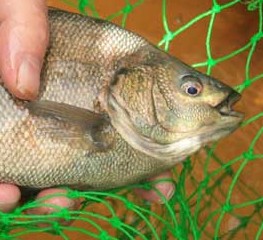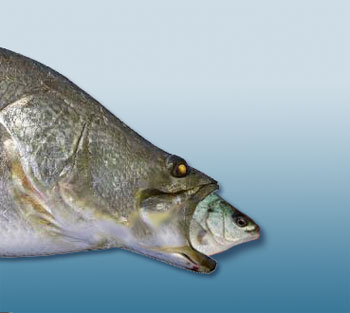Do Fish Feel Pain?
Recently while moving some smaller Jade Perch into a larger tank stocked with a few bigger Barramundi, I noticed one of the larger Barramundi swallow the smaller Jade Perch so only the head was sticking out of it’s jaws. The Barramundi wasn’t large enough to eat the smaller fish but kept him wedged snugly in his mouth for some time. Eventually the barramundi released the smaller fish.
The smaller Jade was found dead on the bottom of the tank the next day.
 A careful examination revealed that the fish was healthy despite a tiny needle like necklace from the teeth of the larger fish around it’s neck. Stress can have a serious effect on fish but the thought arose “do fish actually feel any pain?”
A careful examination revealed that the fish was healthy despite a tiny needle like necklace from the teeth of the larger fish around it’s neck. Stress can have a serious effect on fish but the thought arose “do fish actually feel any pain?”
Well scientific research over the last few years seems to suggest that they do. British researchers experimented on some trout. They injected bee venom or acetic acid into the lips of some of the trout, while control groups of fish were injected with a saline solution or merely handled. The trout injected with venom or acid began to show a “rocking” motion – similar to that seen in stressed higher vertebrates – and those injected with acetic acid began rubbing their lips in the gravel of their tank.
Pain is actually nature’s survival tool. The same reaction that causes you to pull your hand away from a burning stove the instant you touch it is a response mechanism. A nociceptor nerve cell is a sensory receptor that responds to potentially damaging stimuli by sending nerve signals to the spinal cord and brain. The same Nociceptor nerve cells that are in our bodies also function in a similar way with fish.
It seems nociceptor nerve cells are found in both mammals, birds and fish.
What researchers found was that the fish had 58 such receptors around the mouth and actually reacted at lower levels of pain stimulation then humans, perhaps because their skin is more easily damaged. This gives food for thought when handling fish in aquaponics or even when fishing for fun.
How do fish respond when caught on hooks?
In the 1980’s Dutch researcher John Verheijen investigated the reaction of carp to being caught with a hook and then released. He found that carp that had been caught and then released abstained from feeding for a lot longer period of time, and showed stress type behavior by making rapid darting movements, spitting, diving and shaking their heads. The study concluded that the fish felt pain from being hooked, but that their behavior was mostly a fear response to possibly being caught again.
More recent experiments in Norway were conducted with two groups of goldfish wired to electrical foil that could give each group pain through heat. One group was given morphine to mask the pain, the other was given a neutral saline solution.
The findings revealed that fish can feel both reflexive and cognitive pain.
“The experiment shows that fish do not only respond to painful stimuli with reflexes, but change their behavior also after the event,” said research student Janicke Nordgreen. “Together with what we know from experiments carried out by other groups, this indicates that the fish consciously perceive the test situation as painful and switch to behaviors indicative of having been through an aversive experience.”
Some important issues to think about for anyone running an aquaponics system.







Recent Comments